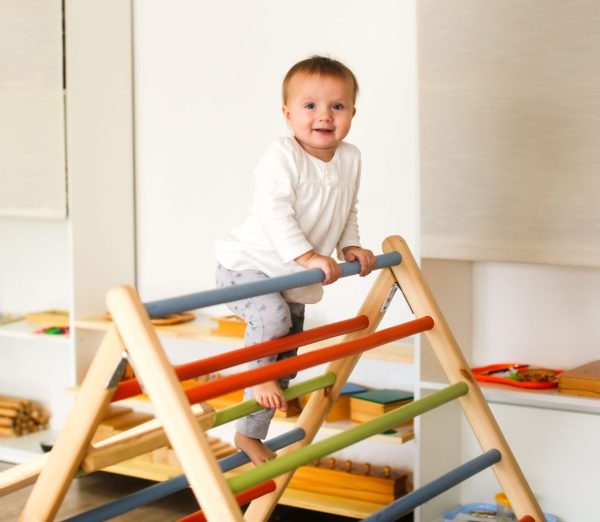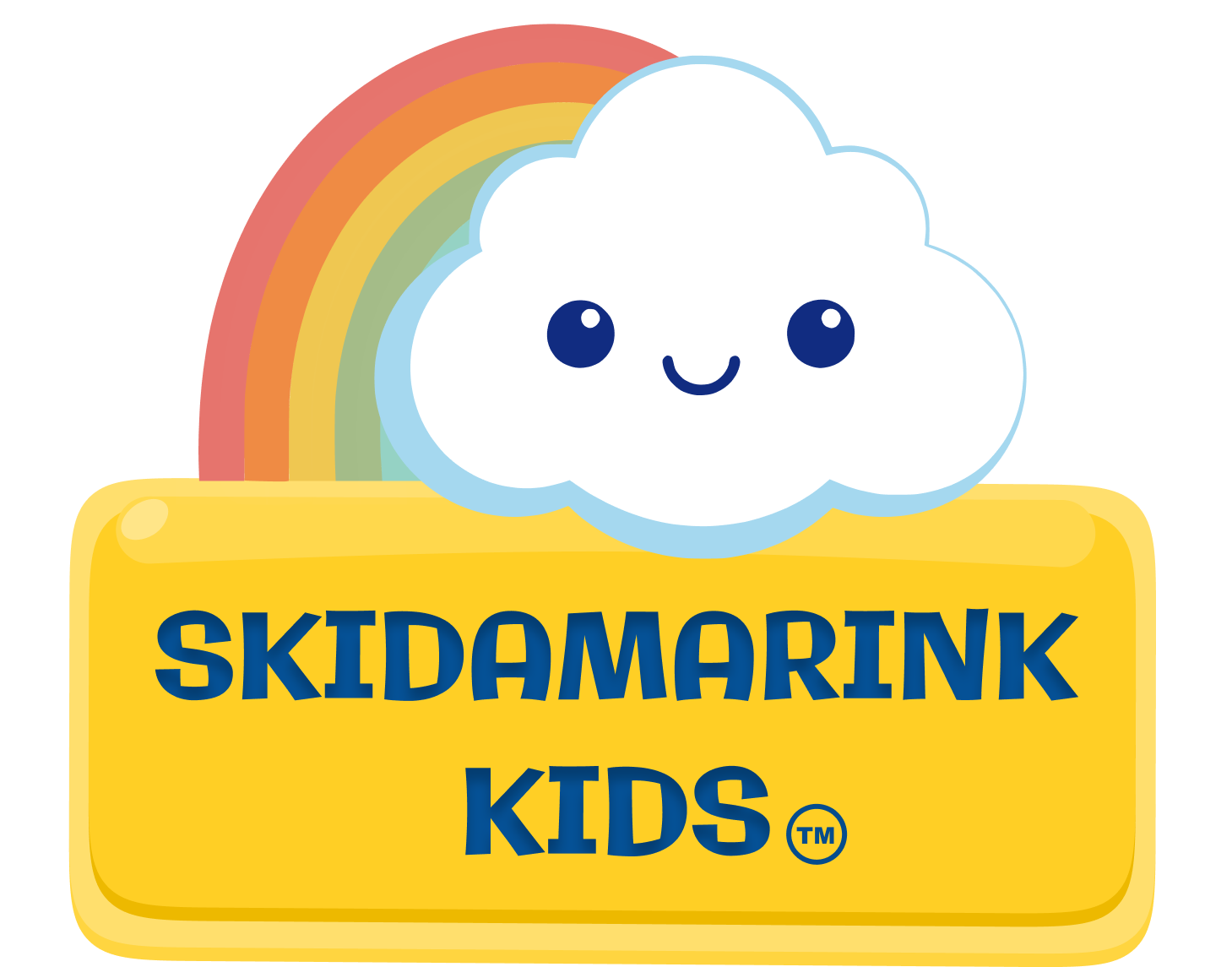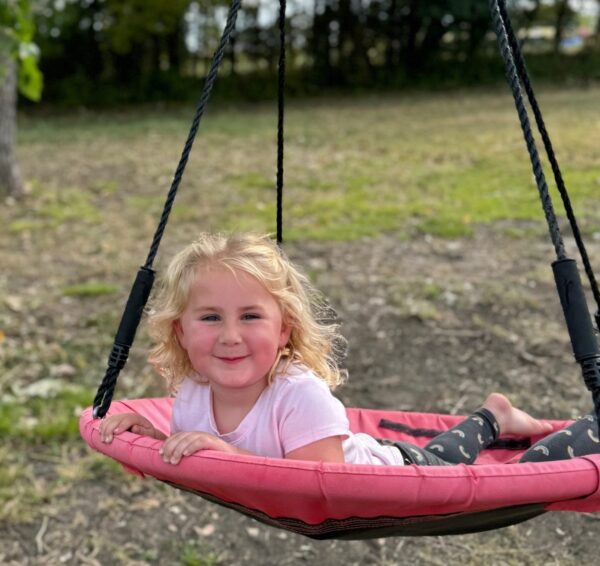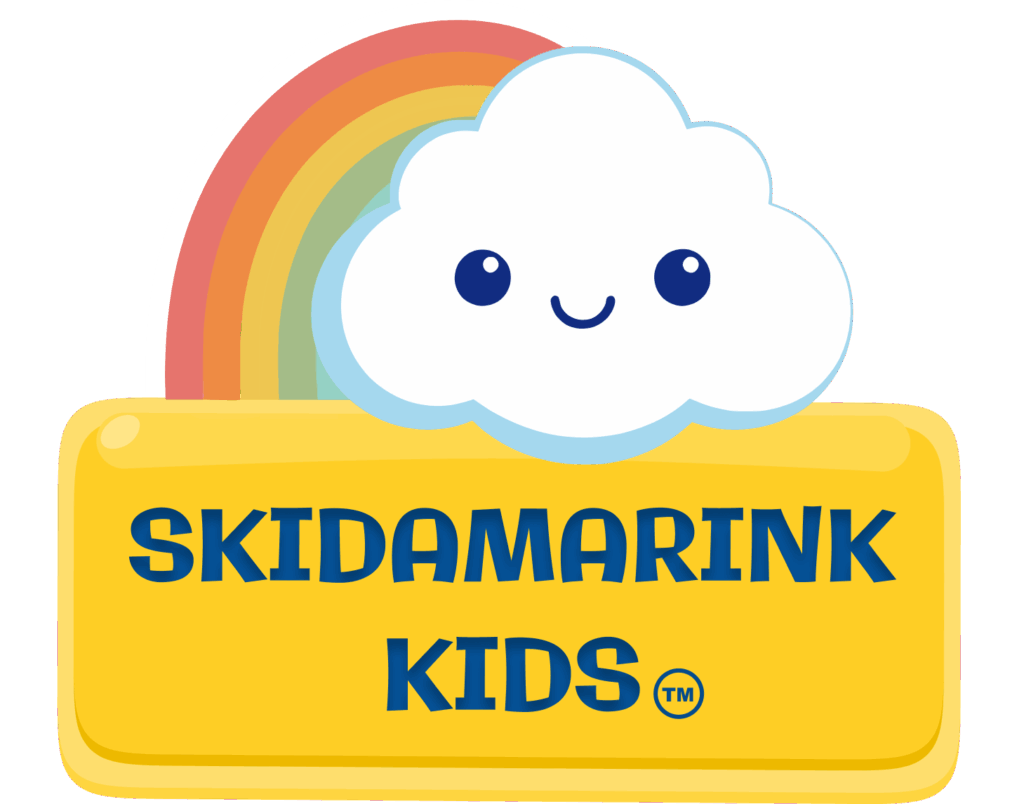Your toddler won’t sit still for dinner. They melt down over sock seams. By 4pm, they’re bouncing off the furniture. Sound familiar? There is a root cause to these behaviors. They’re sensory needs asking to be met. All children have sensory needs that help them feel comfortable, engaged, and regulated throughout their day. Understanding and using sensory activities for toddlers can transform your daily routine. These simple activities support motor skills, behavior, mood, and focus naturally.
The best part? You don’t need expensive equipment or special training. Just simple activities using what you already have at home.
Why Sensory Activities for Toddlers Matter
Everyone processes sensory information differently. Your child’s sensory needs can change depending on sleep, stress, and environment. What works one day might not work the next. This is completely normal!
Want to understand if your child might have sensory processing challenges? Read our guide on Signs of Sensory Issues in Toddlers: Causes, Behaviors, and Strategies for Support to learn more about sensory processing differences.
Sensory activities provide a natural outlet for energy. They promote self regulation. Most importantly, they create valuable opportunities for learning and growth. When your child’s sensory needs are met, everything else becomes easier.
Think about it. When you feel restless, you might go for a walk or fidget with something. Your toddler needs the same outlet. However, they can’t always communicate what their body needs. That’s where you come in.
How Sensory Input Affects Your Child
Sensory activities impact your child’s ability to stay alert and engaged. You can use them throughout your routine to support focus and attention. Similarly, other sensory activities help when it’s time to calm down or wind down.
The key is knowing which activities energize and which ones calm. Some children need movement to focus. Others need quiet, calming input to feel ready to learn. Your child is unique, and understanding their sensory profile makes all the difference.

Daily Sensory Activities for Toddlers: Building a Foundation
Regular daily doses of sensory activities help children feel calm, focused, and alert. This makes it easier for them to engage with their surroundings. Think of sensory input like nutrition for the nervous system. Your child needs varied “sensory snacks” throughout the day.
Activities that regulate the sensory system include:
- Swinging and rocking- we know to rock babies for calming; however, we stop when they are toddlers. There bodies still need this type of input
- Deep pressure activities (hugs, pushing or pulling objects)
- Playing with textured materials
- Bouncing
- Climbing and jumping
These simple experiences can make the difference between a challenging day and a great one. The beauty? Most sensory activities for toddlers use items you already own.
Transform Chaos Into Calm. Build the Neurological Foundation for Happy, Capable, Self-Regulated Kids.
Raising a child with sensory processing challenges? The Tantrum Tamer App is designed to support families navigating sensory sensitivities, regulation struggles, as well as experiencing age appropriate behavior issues.
How Tantrum Tamer helps kids:
- Parent Support & Tips – Learn why behaviors happen and how to respond in ways that build your child’s brain. Understand the root causes of sensory meltdowns and get expert guidance on supporting regulation.
- Proactive Daily Scheduler – Plan sensory breaks, movement activities, and calming strategies throughout the day to prevent meltdowns before they start
- Calming Corner Creator – Set up a personalized sensory-safe space with tools and activities for regulation
- Visual & Voice Support – Reduce overwhelm with predictable transitions using First…Then boards and calming voice prompts (kids respond better to voices other than their parents’!)
- Breathing Animations – Help your child (and you!) regulate when emotions run high
- Expert Resources – Access videos on reflex exercises that improve mood and regulation, plus sensory product recommendations
No more guessing what to say in tough moments. Preset phrases and voice prompts take the stress out of transitions, meltdowns, and daily routines—giving you the tools to respond in ways that help balance your child’s brain to promote self regulation, not just manage behavior.
Download the Tantrum Tamer App today to start supporting your child’s brain balance and bringing more calm to your home.
Finding What Works for Your Child
Try Different Approaches
Every child responds differently to sensory input. One child may love the calming effects of slow rocking. Another might find jumping or dancing more helpful for focusing. Experiment with different sensory activities to see what works best for your child.
Pay attention to your child’s response. Do they seem calmer after swinging? More focused after jumping? Their body will tell you what it needs.
Adjusting to Your Child's Needs
Sensory needs vary from day to day, even moment to moment. Flexibility is key. Providing a range of activities that engage the senses helps. Whether calming or energizing, give your child the input they need as situations change.
Some days your child might need lots of movement. Other days, quiet sensory play works better. There’s no one-size-fits-all approach to sensory activities for toddlers.
Supporting Sensory Development at Home
Encourage Exploration
Children’s sensory systems develop through movement and exploration. Let kids play, explore, and move freely. This supports self regulation naturally. Resist the urge to direct every moment of play. Child-led exploration is powerful. Your child knows what their body needs, even if they can’t verbalize it yet.
Encourage Outdoor Play
Ensure your child has ample time for outdoor play. Nature provides rich sensory input that’s vital for development. Running, climbing, and exploring outside can’t be replicated indoors. Outdoor play engages all the senses at once. The uneven ground challenges balance. Different textures stimulate touch. Natural sounds develop auditory processing. Fresh air and sunlight support overall health.
Balance Active and Quiet Time
While downtime is important, balancing it with active play is essential. An efficient sensory system needs regular input. Too much sedentary time can actually increase restlessness and difficulty with regulation.
Provide Movement Breaks
Allow regular movement breaks throughout the day. Even just 2-3 minutes can reset your child’s nervous system. Activities like jumping, dancing, or swinging work wonders. Movement breaks are especially helpful before meals, during homework (for older children), or anytime you notice increasing wiggles and difficulty focusing.
Deep Pressure & Heavy Work Activities
These activities help regulate the nervous system. They provide calming sensory input that many children crave. Deep pressure is particularly helpful for children who seem constantly “on the go.”
Try these calming deep pressure activities:
- Bear hugs – Big, firm hugs that provide deep pressure to the body
- Rolling in a blanket – Wrap your child snugly and gently roll them back and forth
- Pushing heavy objects – Moving laundry baskets, pushing toy bins, or helping rearrange light furniture
- Blanket swinging – Two adults hold a blanket with your child in the middle and gently swing
- Crawling through pillows – Create an obstacle course with couch cushions to push through
- Roughhousing directed by the child – Gentle wrestling, rolling, or pushing games
- Weighted items – Weighted stuffed animals, blankets, or lap pads during quiet time
- Physical activities – Climbing, jumping rope, swimming, riding bikes, running
- Animal walks – Bear crawls, crab walks, or other weight-bearing exercises
Heavy work is especially powerful before meals, homework time, or bedtime. It helps kids feel “ready” for what comes next.
Setting Up Sensory Activities for Toddlers
Child-Led Discovery
Provide materials for your child to explore. Let them lead the activity. Don’t force participation. It’s okay to slowly encourage them to try new things, though. The goal is exploration, not perfection. If your child wants to dump and pour instead of following your planned activity, that’s okay! They’re still getting valuable sensory input.
Observation First
Allow your child to observe an activity first. Participation should be voluntary and encouraged, yet never forced. Some children need to watch before they’re comfortable joining in. This is normal!
If your child hesitates, you can model the activity. Show them how fun it is. Then invite (but don’t pressure) them to try.
Just-Right Challenge
Choose activities that match your child’s strengths and interests. However, offer a small challenge to encourage growth. Too easy becomes boring and too hard creates frustration. Find that sweet spot in between.
Explain the Activity
Clearly explain the activity and how long it will last. Use timers or counting to increase their tolerance. This helps children feel safe and in control.
For example, say: “We’re going to play with this squishy dough for 5 minutes. Then we’ll wash hands and have snack.” Clear expectations reduce anxiety.
Variety of Materials
Offer a mix of sensory-rich activities. Include preferred materials alongside new ones. This expands their sensory experiences. Good examples include sand, water, food play, rocks, nature items, sensory bins, or textured toys.
Start with familiar textures they already enjoy. Gradually introduce new sensations. This gentle approach builds tolerance without overwhelm.
Group Activities
Introduce new sensory activities in a group setting when possible. This adds fun and support. Children often feel braver trying new things when friends or siblings participate too.
Use Descriptive Language
Use words to describe sensations. Examples include “soft,” “squishy,” “bumpy,” or “scratchy.” This helps your child process the experience and builds language skills. You can also try to narrate what you see. “You’re squishing that playdough! It feels soft and squishy in your hands.” This connects words to sensory experiences.
Incorporate Nature
Spend time outside to enhance the sensory experience. Natural elements like grass, water, or sand provide rich, varied input. Nature is the ultimate sensory playground.
Watch for Overstimulation
Be aware of signs your child is overwhelmed. These include covering ears, closing eyes, or trying to leave. Take breaks as needed. Pushing through overwhelm doesn’t build tolerance. It builds fear.
If your child shows signs of too much input, move to a quieter space. Offer calming activities like gentle rocking or a drink of water.
Sensory Activities for Toddler Ideas by Type
Proprioceptive Input (Deep Pressure)
Proprioceptive activities tell the brain where the body is in space. They’re incredibly organizing and calming for most children.
- Walk or jump on a mattress on the floor
- Crawl over pillows or couch cushions
- Squeeze your child with pillows on both sides
- Roughhousing directed by the child (rolling, gentle pushing)
- Use weighted items like stuffed animals or blankets
- Bear hugs or compression through sheets, tunnels, or body socks
- Any activity that requires pushing, pulling, climbing, or lifting
These activities are perfect for sensory activities for toddlers because they require no special equipment.
Tactile Input (Touch)
Tactile activities develop the sense of touch. They can be calming or alerting depending on the type of touch.
- Offer a warm or cool cloth – On the face or hands for calming
- Deep pressure rubbing – With a towel after bath time
- Squeeze and explore – Putty, slime, kinetic sand, Play-Doh for calming and organization
- Bath toys and sponges – Water play is naturally regulating
- Soft, silky items – Security blankets with tags
- Sensory bins – Fill containers with rice, beans, or pasta
- Play in nature – Rocks, seashells, and sticks provide varied textures
- Leaf rubbing – Place leaves under paper and rub with crayons
- Food play – Explore different textures, draw with pudding, crush graham crackers to make “sand”
Pro tip: Use tactile activities during frustrating moments. Using the left hand provides additional calming effects!
Vestibular Input (Movement)
Vestibular activities involve movement of the head and neck. These are powerful for regulation, attention, and body awareness.
- Activities with varied movement – Side to side, swaying front to back, side to side or spinning
- Climb on playground equipment – Climbing challenges the vestibular system
- Upside down play – Over a ball or couch with support, somersaults, handstands
- Swinging – Forward and back, side to side, or gently spinning
- Therapy ball exercises – Bouncing or swaying while sitting
- Balance disc or sit disc – Wobbling while sitting
- Running or jumping – Simple but effective
- Going down slides – Fast movement provides strong input
- Songs with movement – “Head and Shoulders, Knees and Toes” or other action songs
- Swimming – Water provides resistance and movement
- Dancing – Free movement to music
- Animal stretches – Gentle, controlled movements
Start slowly with spinning activities. Some children love them. Others get dizzy easily. Follow your child’s lead!
Making Sensory Activities Part of Your Day
Understanding sensory processing helps you better support your child’s unique needs. By encouraging movement, exploration, and sensory-rich activities, you promote healthy self regulation. You also support emotional wellbeing and overall development.
Sensory activities for toddlers are valuable tools for daily life. They help children feel calm, connected, and ready to take on new challenges with confidence. The more you incorporate these activities, the more you’ll notice positive changes in behavior, focus, and mood.
Start small. Pick one or two activities to try this week. Notice what your child gravitates toward. Build from there. Before you know it, sensory activities will become a natural part of your routine.
Closing Thoughts
You don’t need to be an occupational therapist to support your child’s sensory needs. Simple sensory activities for toddlers make a real difference. Trust your instincts. Watch your child. Adjust as needed.
The sock seams will probably still bother them sometimes. They might still get wild by 4pm occasionally. However, when you meet their sensory needs throughout the day, these challenges become more manageable. You’ll have tools and strategies that actually work.
Remember, every child is different. What works for your friend’s child might not work for yours. That’s okay! Keep experimenting. Keep playing. Keep moving. Your child’s nervous system will thank you.
Ready to get started? Pick one activity from this guide and try it today. Notice how your child responds. Adjust and build from there. You’ve got this!
For more ways to support your child’s development through movement, check out our Gross Motor Activities for Kids: Moving to Grow Guide for Parents and Play-Based Self-Regulation Activities: Age-by-Age Play Guide.
Want to understand why movement matters so much? Read Why Your Child Can’t Self Regulate: The Hidden Brain Issue.
Note to Parents
This blog is for informational purposes and not medical advice. My desire is to help you do what you can to support your child’s development in a natural way. Please reach out to your child’s pediatrician if you have developmental concerns.
– Kendra








